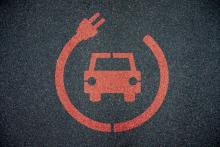The power of positioning

GPS technology conquered the car via satnav. Integrated into the dashboard pre-sale, stuck to the inside of the windscreen as dedicated devices later, or brought up on demand using our smartphones, satellite-based navigation solutions have displaced paper maps and road signs as the main means of finding the way. Since then, the technology’s presence in vehicles has been cemented by widespread mandates for automatic emergency response systems such as the EU’s eCall. Today, each and every new car that hits the roads has a GPS receiver built in.
When it comes to locating the vehicle and finding the quickest route home, first-mount navigation solutions hold an advantage over after-mount and smartphone-based ones. Their larger, better-placed antenna and, increasingly, their ability to integrate data from around the vehicle, including inertial and wheel-tick sensors, mean that they can deliver a much more accurate position. Remarkably, however, many drivers of cars with built-in navigation systems still turn to their smartphones for the quickest route to their destination because of their often-superior user experience, which improves continuously from one software upgrade to the next.
Despite being well established, today’s navigation solutions still have room for improvement, says Frédéric Duhem, Regional Application Marketing for Automotive at u-blox. “Drivers don't want to have to wait for their navigation system to boot to get their position. They want to know where they are as soon as they turn on the ignition and see their itinerary on the map. They expect to be localized immediately when they exit a tunnel – and inside the tunnel as well. Delivering such performance requires a global navigation satellite system (GNSS) receiver with a dead reckoning solution based on inertial measurements, assisted GNSS to speed up to time to achieve a position fix, as well as the ability to store the car’s last position and heading when it is parked.”
Stay informed
We would like to keep you informed. Fill out this form to stay up to date with new ideas and emerging technology from u‑blox.
Lane-level accuracy
Responsiveness is one challenge. Accuracy is another. Lane-level accuracy – the ability to reliably determine which lane a vehicle is driving in – is the next step up in terms of positioning performance, enabling new use cases such as augmented reality heads-up displays (ARHUD). Achieving this requires more advanced multi-band, multi-constellation GNSS receivers capable of reliably locating the vehicle within a specific lane on a map. Tracking satellite signals from multiple GNSS constellations increases the number of GNSS satellites that are within line of sight, even from deep within urban canyons. Tracking them on multiple frequency bands, on the other hand, helps mitigate signal delays incurred in the ionosphere and can help reduce multipath errors caused when signals bounce off built structures or the surrounding topography.
Still, even multi-constellation, multi-band GNSS receivers alone are not enough to consistently deliver the submeter-level positioning performance required for lane-level accuracy. GNSS receivers need to be able to further enhance their performance by integrating GNSS correction data in real-time. The precise-point positioning real-time kinematic (PPP-RTK) algorithms that this requires are able to correct satellite clock and orbit errors, and other error sources. “We address these challenges with our u-blox F9 platform, which has had a lot of success among most automotive OEMs, with growing demand for these kinds of solutions coming in particular from China, Japan, and Korea,” says Duhem.
Authenticating advanced driver assistance features
Before advanced driver assistance system (ADAS) features and fully autonomous driving roll out everywhere, they will most probably become available on dedicated sections of the road network and under specific operational conditions. One example is that of the highway chauffeur, offering fully autonomous driving on precisely geofenced stretches of the highway.
According to Duhem, this use case is becoming increasingly common in RFQs (requests for quotation) from automotive OEMs and is already a reality.
Determining whether the conditions are met for such ADAS features is a high-stakes decision, which is why it imposes even more demanding requirements on the GNSS receiver than the lane-level navigation use case.
Carmakers are moving towards relying on functionally safe GNSS solutions as the only possible source of a safe absolute position to complement other relative positioning solutions (radar, lidar) for authorizing autonomous driving. “The GNSS receiver will play a vital role in informing that the car is in an authorized section of the highway, where the autonomous driving feature can be activated. In the future, we see OEMs moving towards ASIL-B types of solutions for safety-critical applications in which the vehicle takes control and makes decisions,” he says.
The automotive safety integrity level (ASIL), defined in the ISO 26262 standard on functional safety, specifies which of the standard's requirements and safety measures apply to each element of the vehicle’s electrical and electronic systems, with ASIL-A the least and ASIL-D the most stringent level. Compliance with the standard requires fulfilling specific rules in software development and assessing, in detail, how the vehicle’s hardware might fail, and how these failures can be detected or mitigated.
Ultimately, safety is a combination of both functional safety and safety of the intended function (SOTIF), defined in ISO 21448. Whereas functional safety covers hardware and software, SOTIF, also referred to as integrity, focuses on the weaknesses of the technologies themselves, such as the impact of reflections, weak signals, or misuse by their users. In the case of a GNSS receiver, this typically means that a so-called hazardous misleading information (HMI) event, in which the position error exceeds its alert limit (AL) for longer than the time-to-alert (TTA), can only occur with a probability defined by its integrity risk (IR). The system’s protection level is bound on the position accuracy, which ensures that, as long as the alert limit is not exceeded, the integrity risk is met.
The sensor of last resort
Once firmly established in the highly automated vehicle’s vast suite of sensors, enabling navigation, geofencing, and participating in localizing the vehicle, the GNSS receiver will likely take on additional responsibilities.
The GNSS receiver’s technological independence from the vehicle’s remaining sensors brings another crucial benefit. Tier 1 and OEMs often combine the output from the various sensors onboard the vehicle, e.g., its cameras, lidars, inertial sensors, and GNSS receiver. If for some reason the sensors fail due to poor weather or lack of visible road markings or other landmarks, the GNSS receiver becomes the data source of last resort. “Because you need a technology that works globally and in all weather conditions, GNSS is the only available positioning technology of last resort,” says Duhem.
Keeping hackers at bay
More and more cybercriminals – and cybersecurity researchers – are demonstrating their ability to hack cars. The easiest way to disrupt GNSS is to jam the receivers by drowning out the weak satellite signals in a sea of radio-frequency noise, disrupting their operation. A more sophisticated approach involves spoofing them by feeding them fake signals, essentially tricking the receiver into believing that it is somewhere where it isn’t. Justifiably, these threats are causing concern among OEMs, who routinely request anti-jamming and anti-spoofing solutions.
|
Alert limit (AL): Time-to-alert (TTA): Hazardous misleading information (HMI): Integrity risk (IR): |
There are several ways to deal with jamming and spoofing, explains Duhem. “At u-blox, algorithm development for jamming and spoofing detection and mitigation is one of our core competencies. Using these algorithms, the receiver can raise a flag to warn that it is being jammed or spoofed.”
Another emerging approach involves authenticating the incoming GNSS signals, a feature provided by the European Galileo GNSS constellation. “Galileo's OS-NMA feature allows you to ensure that the signal you get is correct thanks to an authentication message that contains a key that is private to you and that confirms, via a webserver, that the measurement you receive has not been hacked.”
But the RF interfaces are by no means the system’s only attack surfaces. Hackers could also attempt to reconfigure the GNSS receiver, target the IP connection to any servers it communicates with, or target the communication between the GNSS receiver and the host. All this points at the need to consider security end-to-end throughout the entire process, protecting physical and software interfaces, authenticating firmware, encrypting communications, all inaddition to the measures required to detect and mitigate jamming and spoofing.
A growing role with increasing automation
There is an ongoing paradigm shift in the automotive industry. In the past, vehicles rolled off the production line with a fixed feature set. The new trend is to design vehicles in such a way that they can be software upgraded even years after they were purchased to deliver previously unavailable features. This typically requires provisioning the vehicle in terms of hardware at the time of production in such a way that advanced functionalities have the physical resources they need once they have been sufficiently tested, validated, authorized, and are ready to hit the road. This trend will impact requirements that OEMs place on strategic components in the system, including the GNSS receiver.
Frédéric Duhem sees a growing role for GNSS technology as vehicles become increasingly automated. “There will likely be more and more advanced features that will rely on high precision and safe positioning as cars acquire higher levels of automation. The GNSS receiver and related location services from GNSS correction data to other types of GNSS augmentation services will only become more important as this evolution continues,” he concludes.

Stay informed



